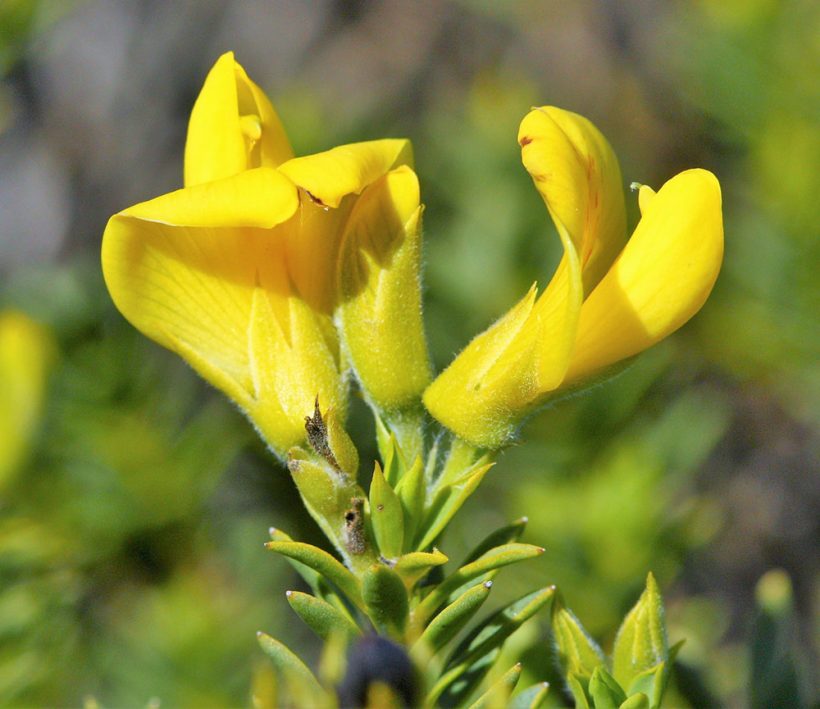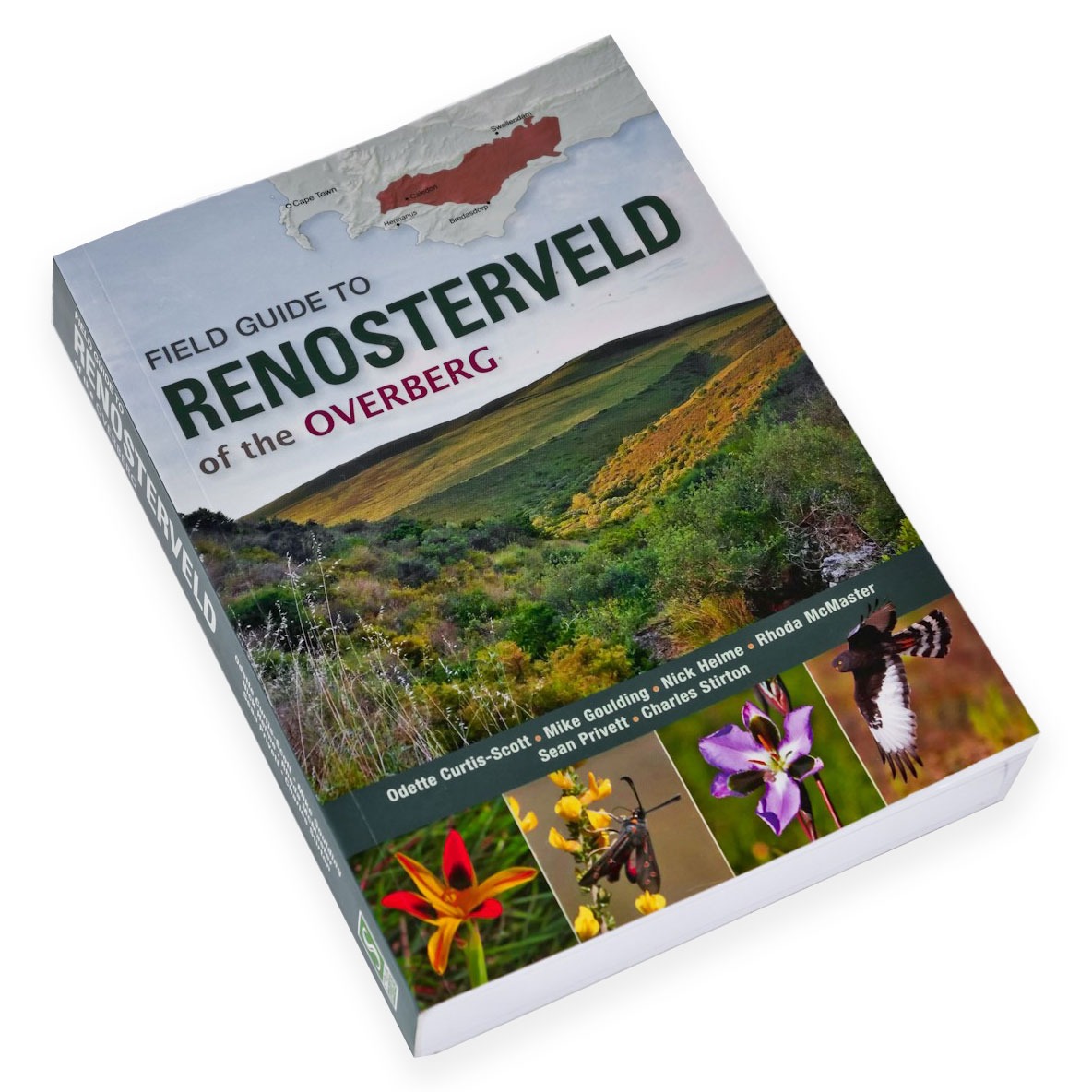If you want to talk about the Pea family, then there’s no better time than spring. Many members of the Pea family or legumes (Fabaceae) are flowering now, bringing amazing colour to our Overberg renosterveld landscapes.
For any plant lover and consumer, legumes are an important family. They’re the third-largest plant family globally (pipped only by the Orchid and Daisy families), and they have great economic importance – especially as a food source and for medicinal purposes.
But for renosterveld afficionados, legumes are vital for a different reason: They serve as a valuable indicator of veld condition. Legumes occur widely across renosterveld landscapes. Many are also very palatable to livestock. So if your Pea family members are not flourishing and looking healthy, it’s possible the veld is being over-utilised.
They’re also an incredibly important part of the ecosystem, given that they’re a vital source of nectar and pollen for bees and other pollinating insects. What’s more, they help add nitrogen to the soil, making the soil more fertile for other plant species. They do this through bacteria (or rhizobia) that occur in the root nodules of plants.
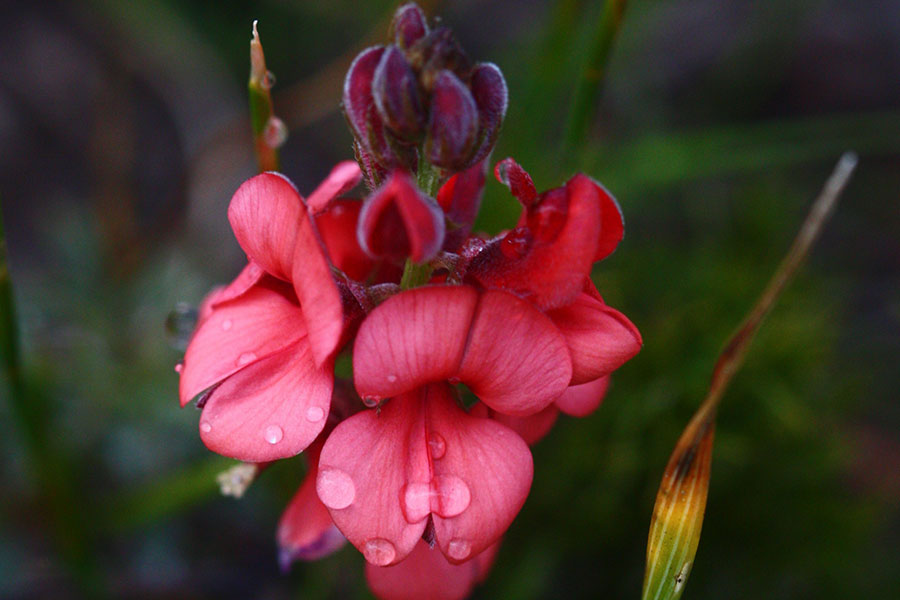
Above: Indigofera heterophylla
Fabaceae are very easily identifiable, even to the uninitiated.
During flowering season, look out for their five-petal flowers. These are made up of an erect, flag-like or banner petal, called the flag petal; and two adjacent, mostly horizontal wing petals covering two partly fused boat-like bottom petals (called the keel). And Fabaceae seeds are notably kidney-shaped in flattened or swollen pods.
In renosterveld, there are a couple of stand-out genera in the Pea family. You may well have heard of Aspalathus and Indigofera. These are well represented, especially in our Overberg renosterveld.
But what about some of the other speces that rarely enjoy the limelight? Here we take a moment to showcase some of the lesser-known genera and species, such as:
The genus Liparia (from the Greek liparos – which means oily or shiny, referring to the shiny hairless leaves of members of the genus).
- Liparia striata: This Endangered species survives on fewer than 10 unploughed hill slopes on a few farms between Swellendam and Heidelberg. It specifically likes the pebbly, loamy-clayey soil in renosterveld. However, it’s still a little too early to see this species in flower, as it usually flowers between December and January.
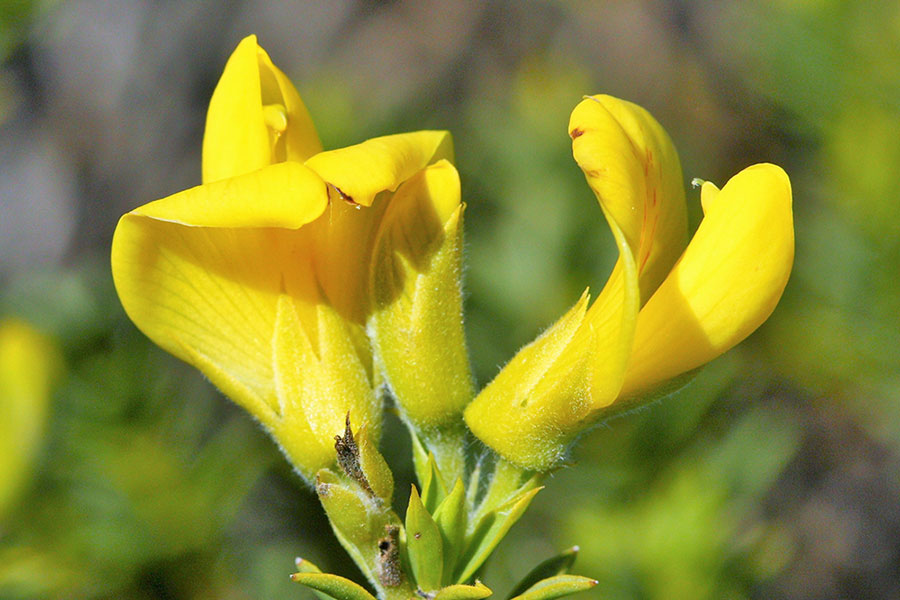
Above: Liparia striata
The genus Otholobium (from the Greek otheo – which means to burst forth; and lobion – which refers to the small pod).
- Otholobium curtisiae: Named after ORCT Director Odette Curtis-Scott, this Endangered species flowers from August to September. The flag petal has a large central purple nectar guide, to provide direction to pollinators. It has, however, rarely been seen in flower.
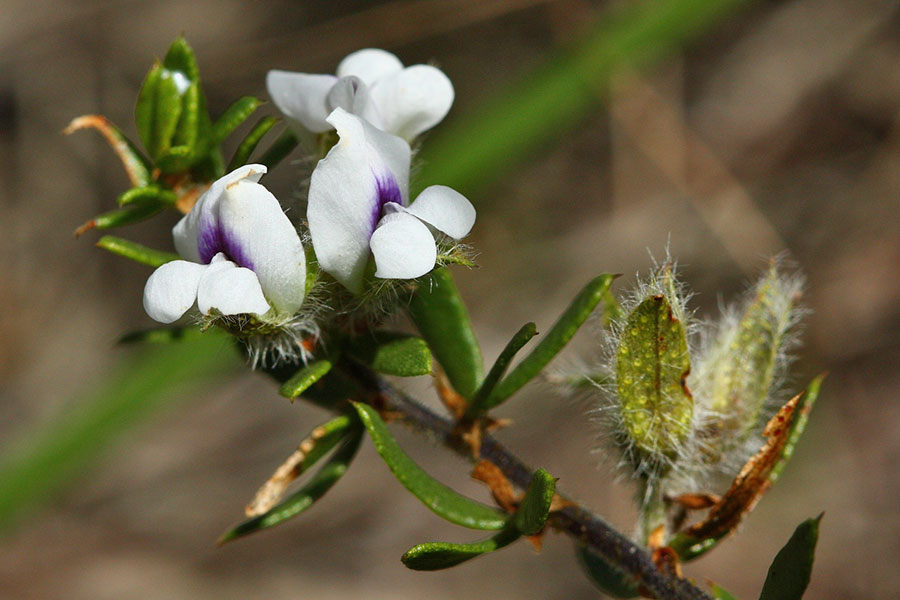
Above: Otholobium curtisiae
The genus Podalyria (named after the Greek healer Podalirius, who led 30 ships to attack Troy).
- Polalyria myrtillifolia: This tall species reaches 2m in length, with pink flowers and a white nectar guide. It mainly occurs on sandstone and shale flats, and is fairly widespread across the Cape Floral Kingdom. It flowers between July and October.
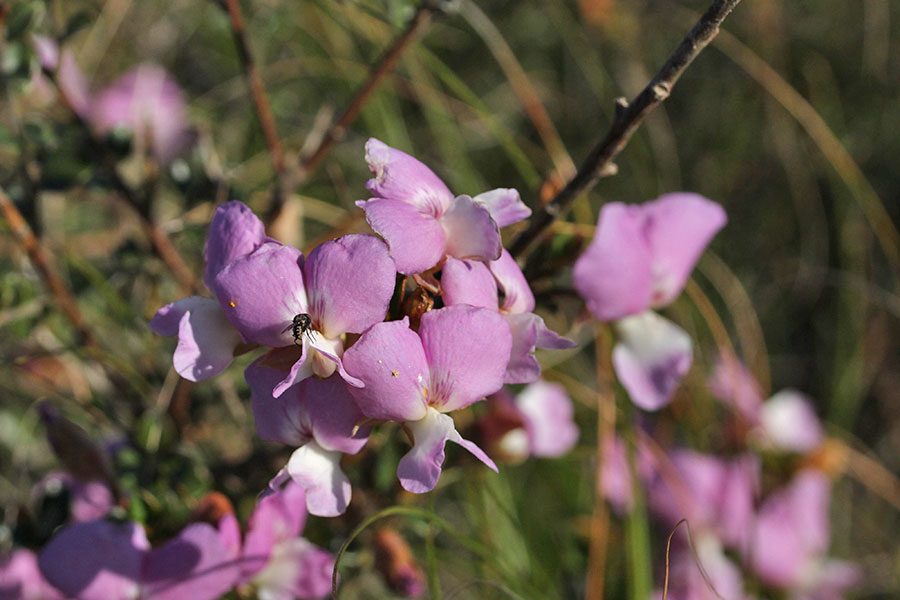
Above: Polalyria myrtillifolia
The genus Wiborgia (named after the Danish veterinarian and botanist Eric Nissen Viborg).
- Wiborgia tenuifolia: It flowers between September and November, and only occurs between Bredasdorp and Riversdale. This Near Threatened species grows to 1.5m in length, with pinkish to mauve flowers.
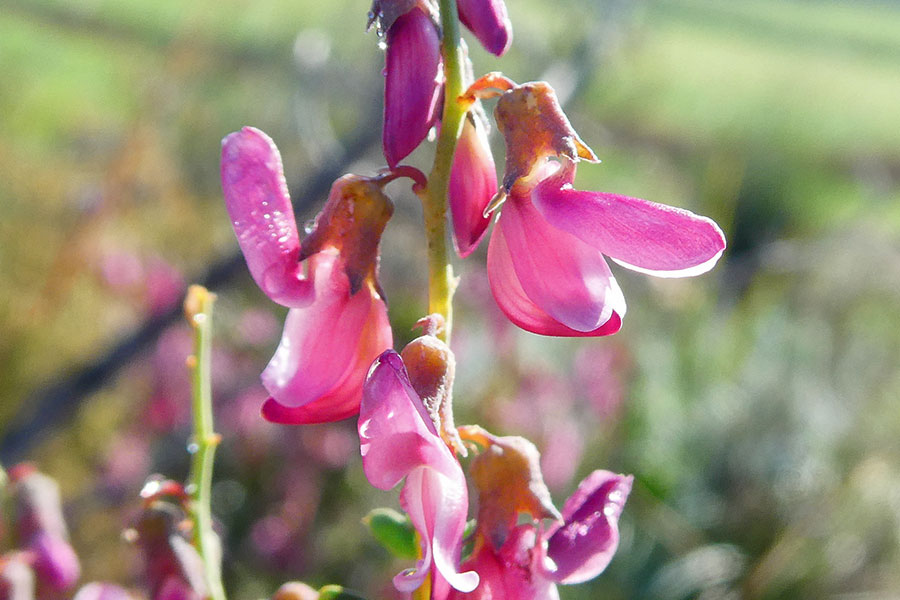
Above: Wiborgia tenuifolia
The genus Xiphotheca (from the Greek word xiphos, which means sword, and theka, or capsule, referring to the shape of the pods).
- Xiphotheca guthriei: It occurs on the loamy and clayey soil of renosterveld, between Botriver and Potberg. However, if you search for its dark yellow flowers now, then you’re a little too late: it usually flowers from April to July.
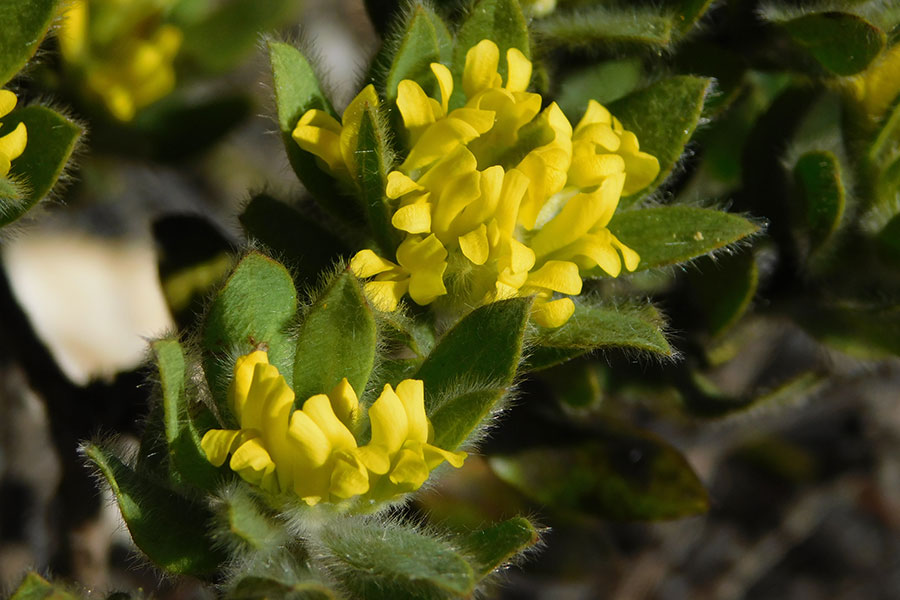
Above: Xiphotheca guthriei
Further Reading
Find out more about Fabaceae in the Field Guide to Renosterveld of the Overberg.
This rich and detailed field guide draws on the knowledge of its expert authors, including the ORCT’s founder and director Dr Odette Curtis-Scott. Copies are available for purchase from our online shop, with the proceeds helping us to continue our vital conservation work in Overberg Renosterveld.

